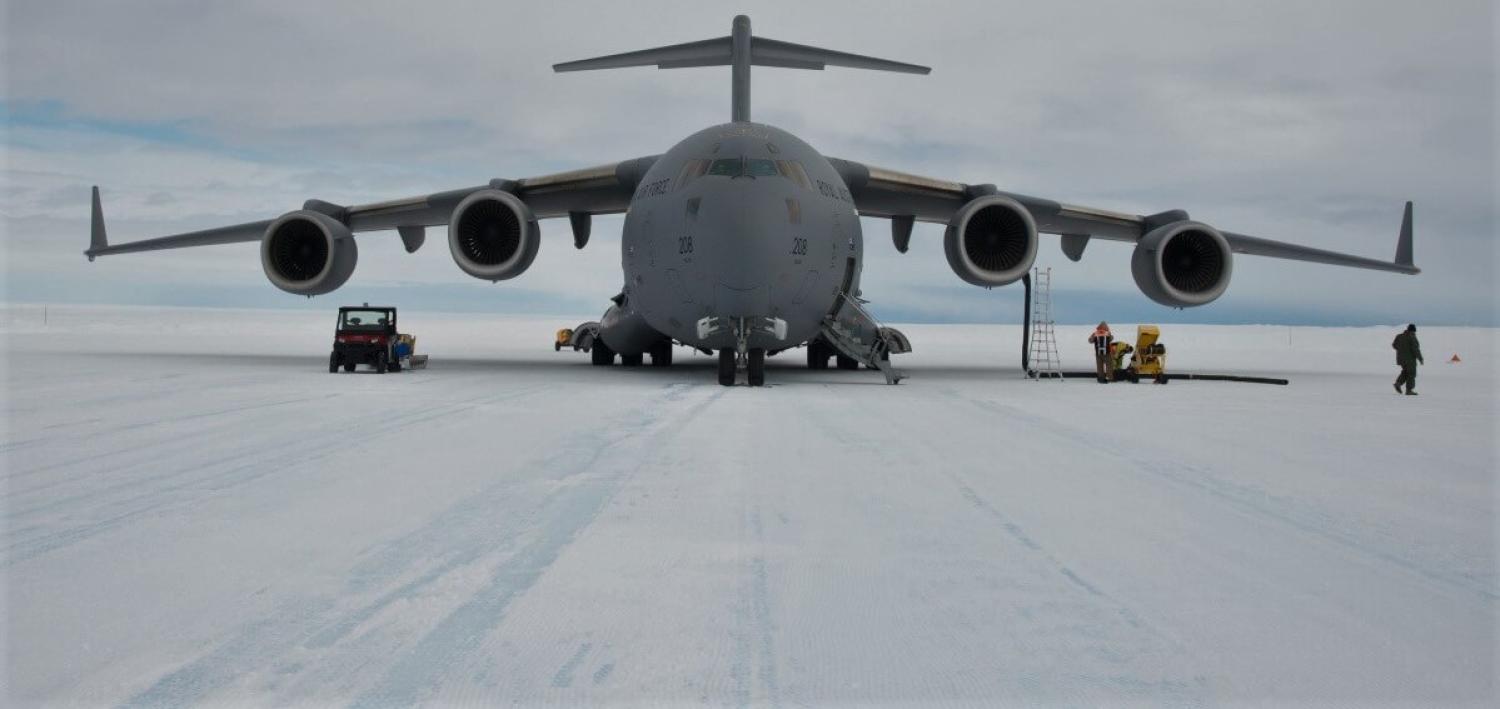The government has announced budget support for Australia’s first paved runway in its Antarctic territory, as part of a modernisation program for its Antarctic bases.
Of all the Antarctic-related investment opportunities available to them, the government has chosen to pursue a business case for the construction of a runway at the Davis Station location that will potentially give year-round air access to the central East Antarctic coast, covering times of the year when ships and aircraft cannot easily reach the continent.
The current air service consists of an Airbus A319 from Hobart to Wilkins Aerodrome, on the glacial plateau above Casey Station, during the summer months (roughly October to February) for personnel and smaller cargo, and a C-17 Globemaster on the same route for personnel and heavy cargo. Davis and Mawson stations further along the coast are serviced by onward flights in smaller aircraft.
The rationale for a year-round air service is obvious. Wilkins Aerodrome is sometimes unserviceable due to glacial melt, and shipping is expensive and can be slow, with schedules vulnerable to weather and ice conditions as well as search and rescue calls. Although it only occurs once each year, when the soon-to-be-replaced Aurora Australis resupplies the bases, the ship is taken away from conducting marine and other scientific research.
A year-round runway could provide more efficient access to the continent, improving support for scientific research and the capacity for Australia and other countries with bases in the vicinity to respond to emergencies. The closest facilities are Zhongshan (Chinese), Progress 2 (Russian), and Bharati (Indian), all of which are about 110 kilometres to the west, in the Larsemann Hills. Another Russian base, Mirny, is around 670 kilometres to the east, and Taishan, another Chinese base, is about 600 kilometres south.
The announcement is in response to a recommendation in the 20-year strategic plan for Antarctica that details strategies for Australia to bolster its flagging leadership in Antarctica through enhanced logistics capabilities. Science is the currency of credibility in Antarctica, yet scientific budgets have been cut in recent years. Therefore, this announcement will be seen to optimise our future scientific effort.
Davis Station was established in 1957 and has been operating continuously since. It is located in an ice-free area seaward of the globally significant Vestfold Hills. This location has a number of outstanding features, even by Antarctic standards, including “hundreds of lakes and ponds, ranging in salinity from amongst the most saline to the freshest in the world”.
It is not only the building of the runway and other infrastructure development but also the operation of aircraft that must be considered in this case.
All activities conducted in Antarctica are subject to scrutiny through an environmental lens. This requires meeting a complex set of legislative demands, beginning with international obligations set out by the Protocol on Environmental Protection to the Antarctic Treaty 1991, which are implemented through the Antarctic Treaty (Environment Protection) Act 1980, with possible referral to the Environment Protection and Biodiversity Conservation Act 1999, with which Australia must comply.
Accordingly, the Australian Antarctic Division undertook an Initial Environmental Evaluation in the 2016–17 summer season “to provide geotechnical and environmental data that will assist in decisions on site selection” for a runway.
Two prospective locations were identified as the focus for this fieldwork. The targeted area of the Vestfold Hills has numerous values, including biological, physical, and geological significance, as well as wilderness, aesthetic, and cultural heritage attractions.
The conclusion of the IEE – and therefore the decision to proceed to the next step, the business case – was that the activity of collecting data to aid in selecting a site would have only negligible impact on the environment. The actual plans for constructing a paved (concrete) runway in the Vestfold Hills along a rock ridge will be subject to a further evaluation process, requiring more significant and detailed scrutiny.
The announcement was made jointly by the Minister for Foreign Affairs and the Minister for the Environment and Energy, hinting at the importance of the initiative to both departments. The Australian Government is the competent authority in determining whether or not to proceed with the runway, as no other Antarctic Treaty Consultative Party has power of veto when the process has complied with the letter, spirit, and intent of the environmental protocol, and indeed with Australian domestic law.
Therefore, a business case will need to carefully balance costs to the environment with the benefit to Australia, which claims sovereignty over the Australian Antarctic Territory.

